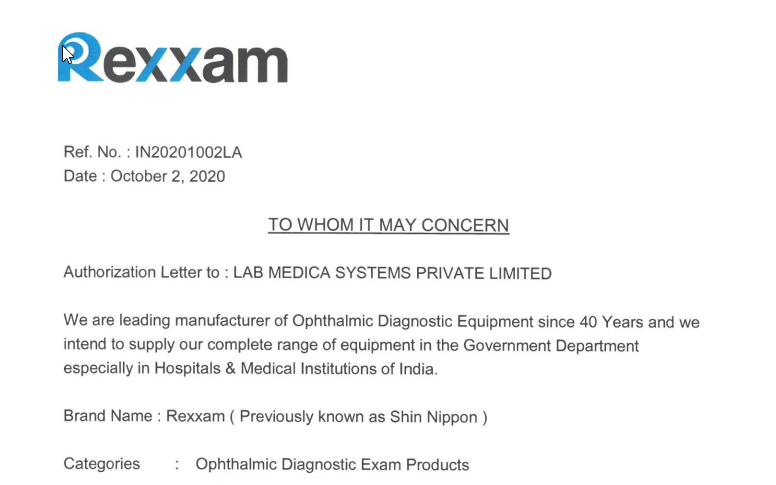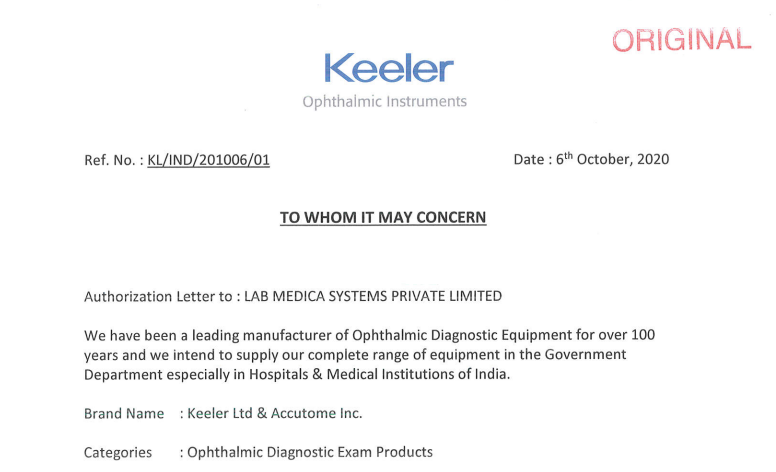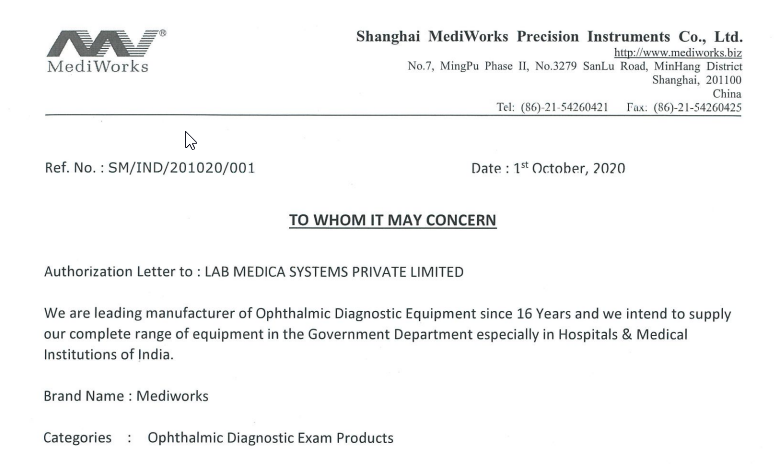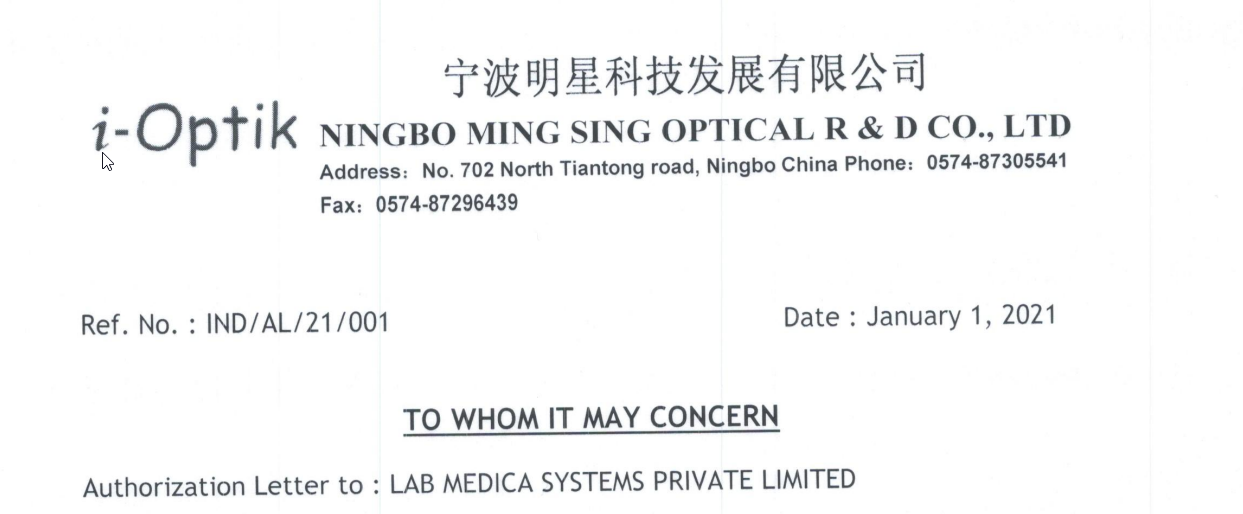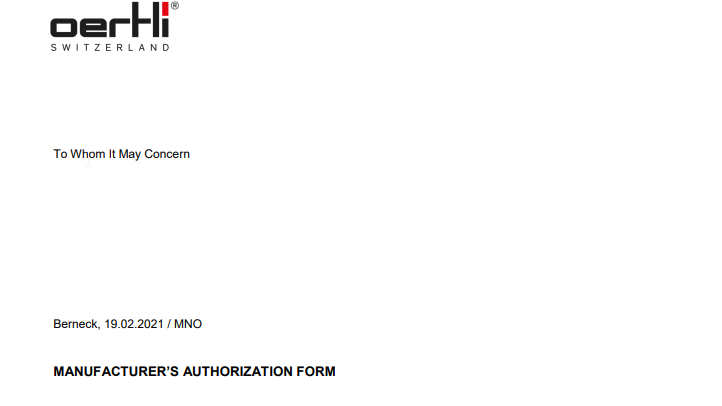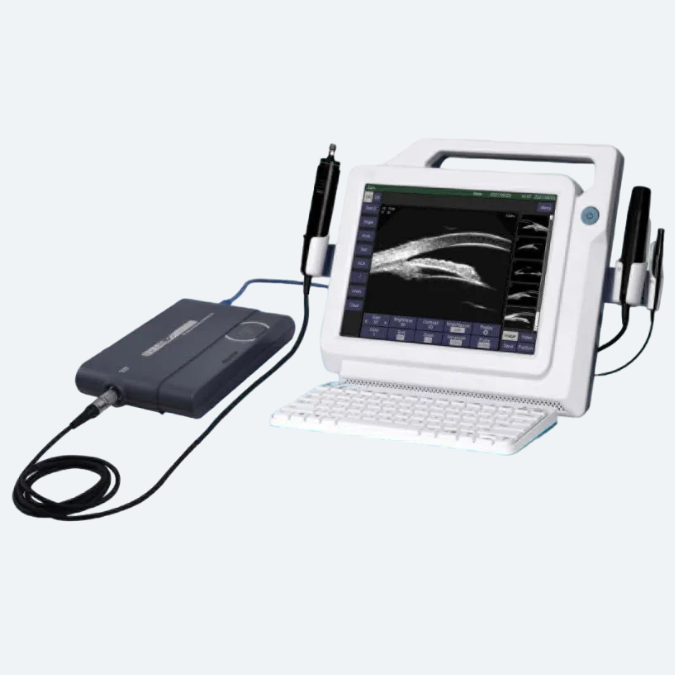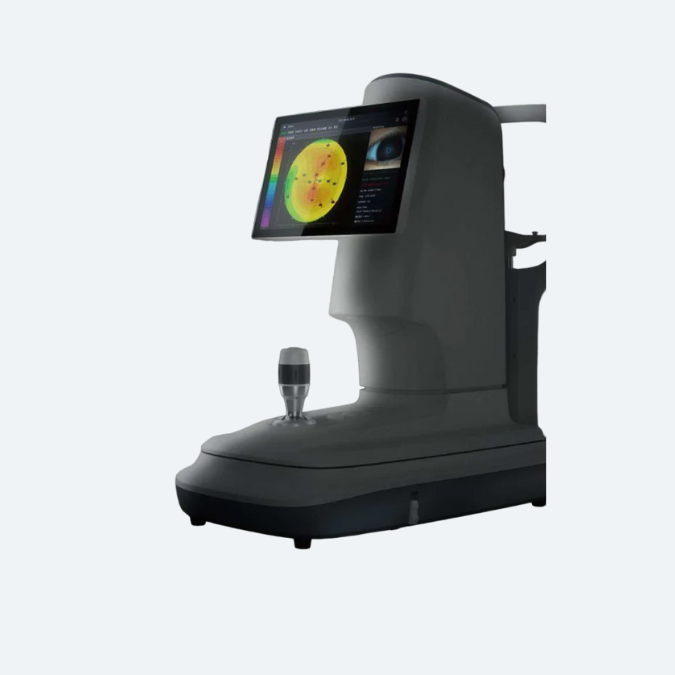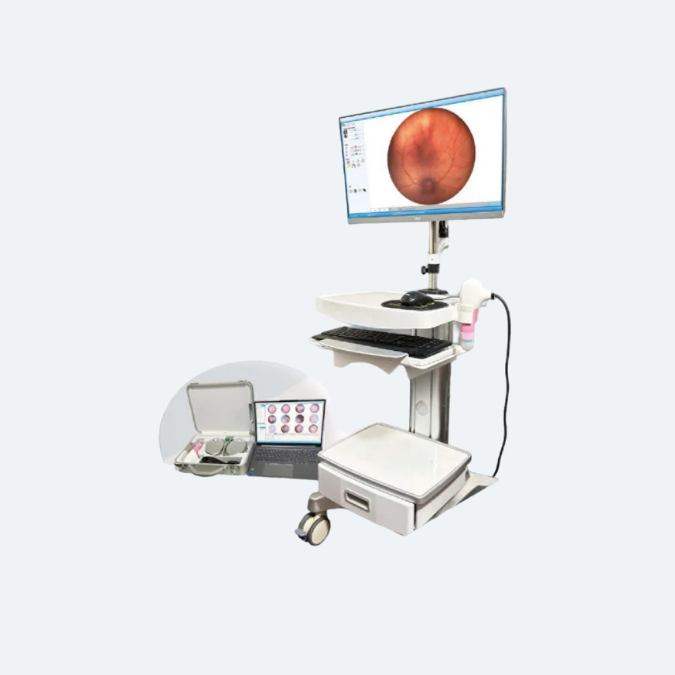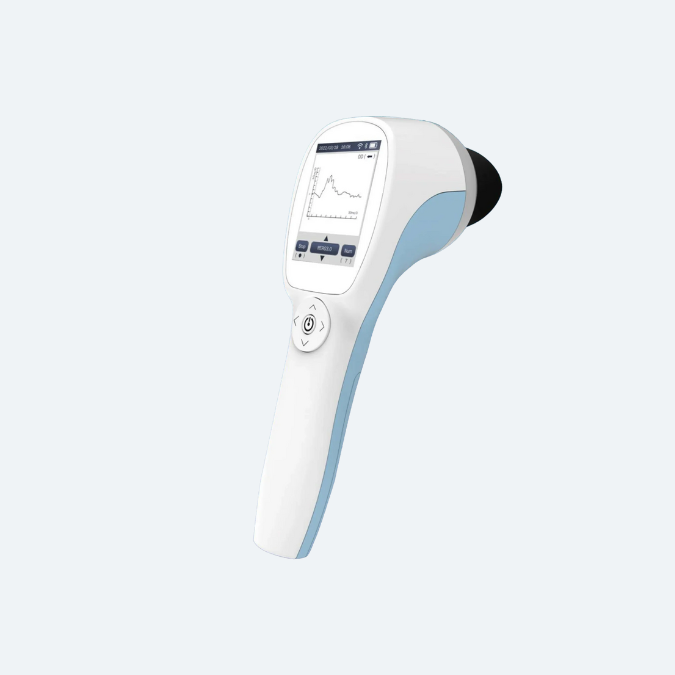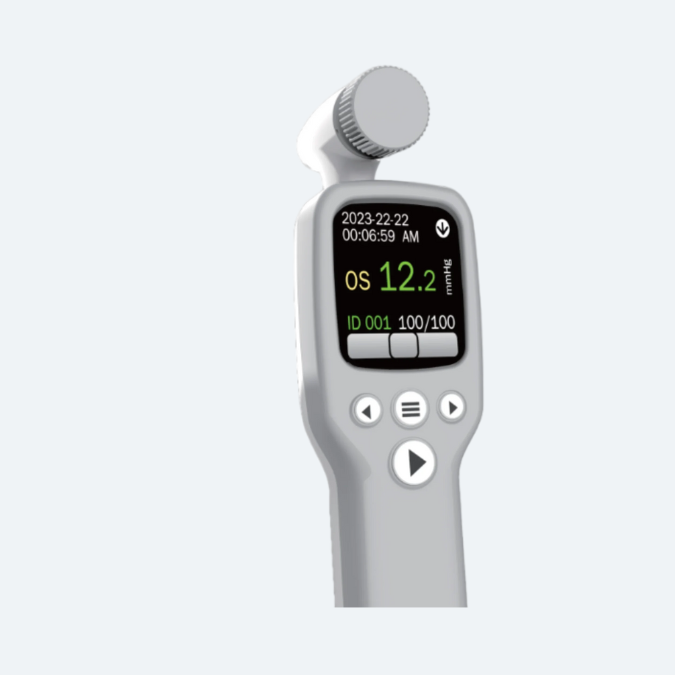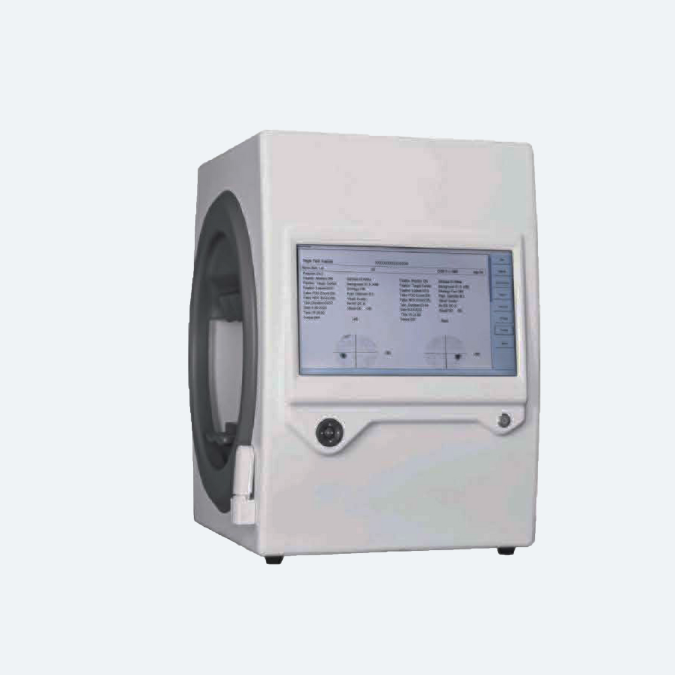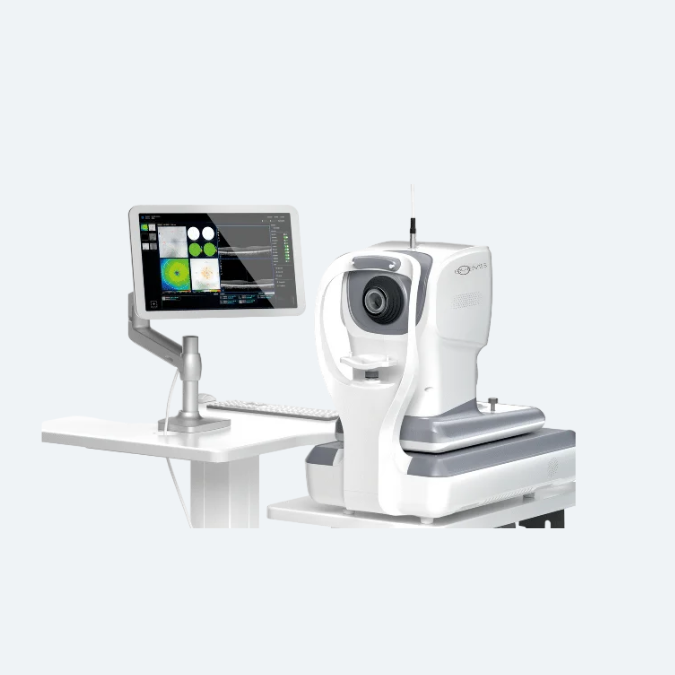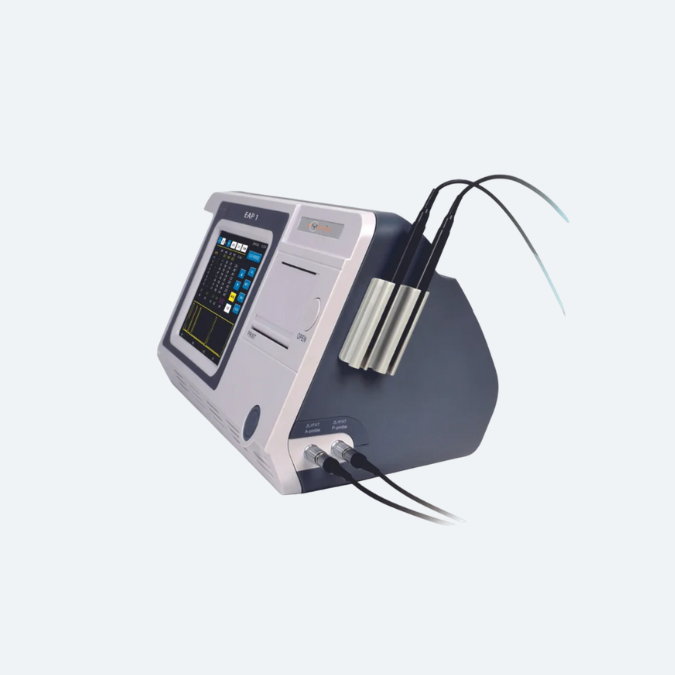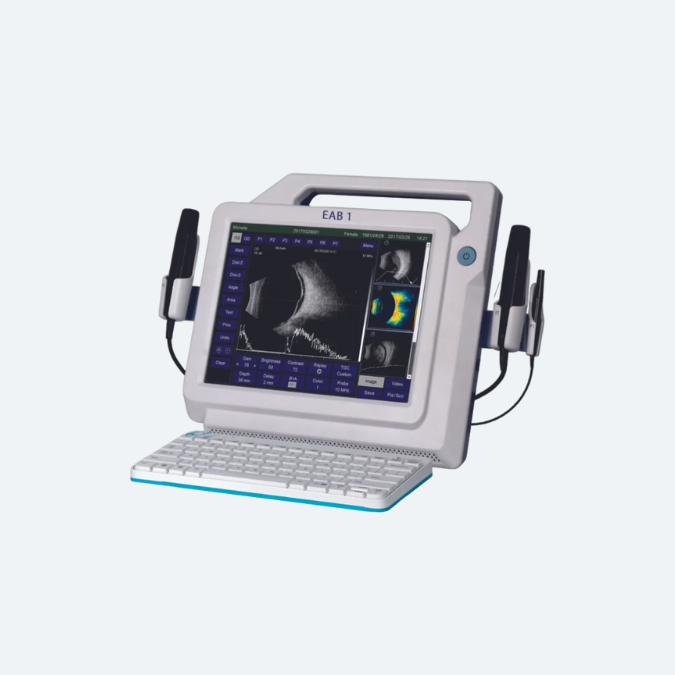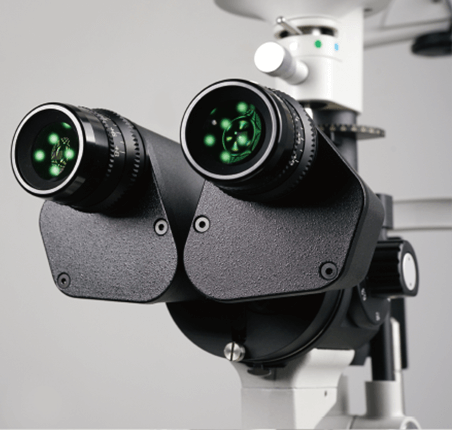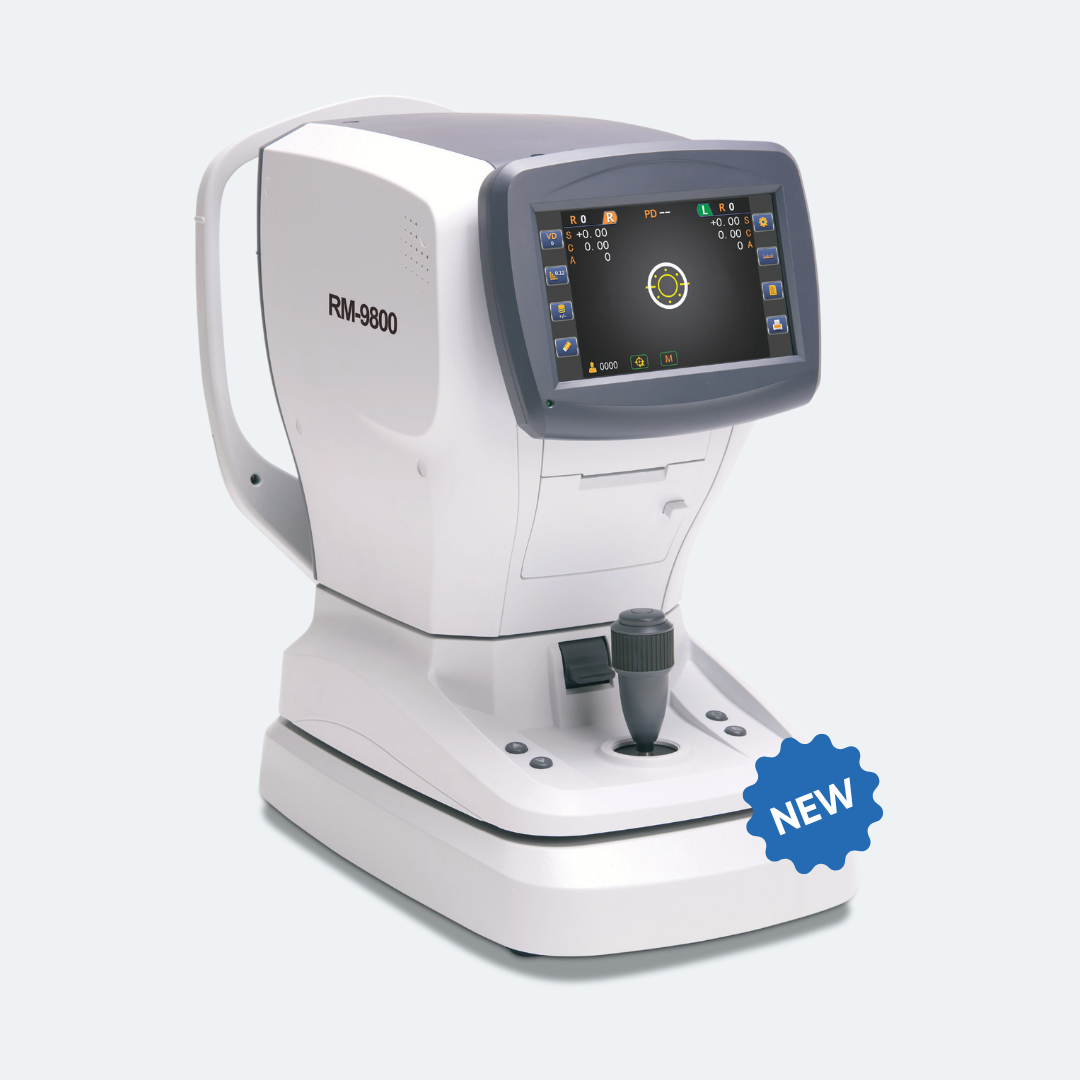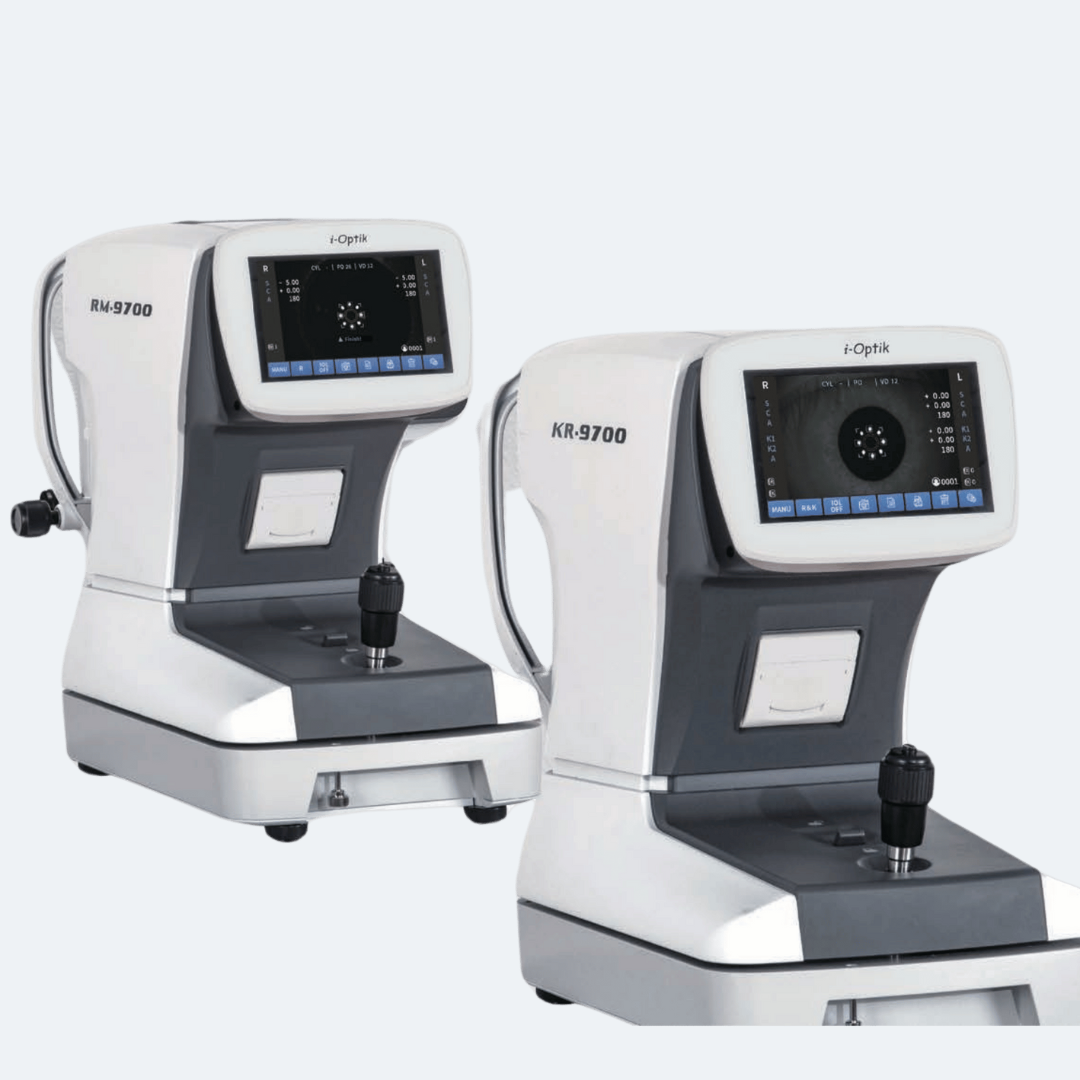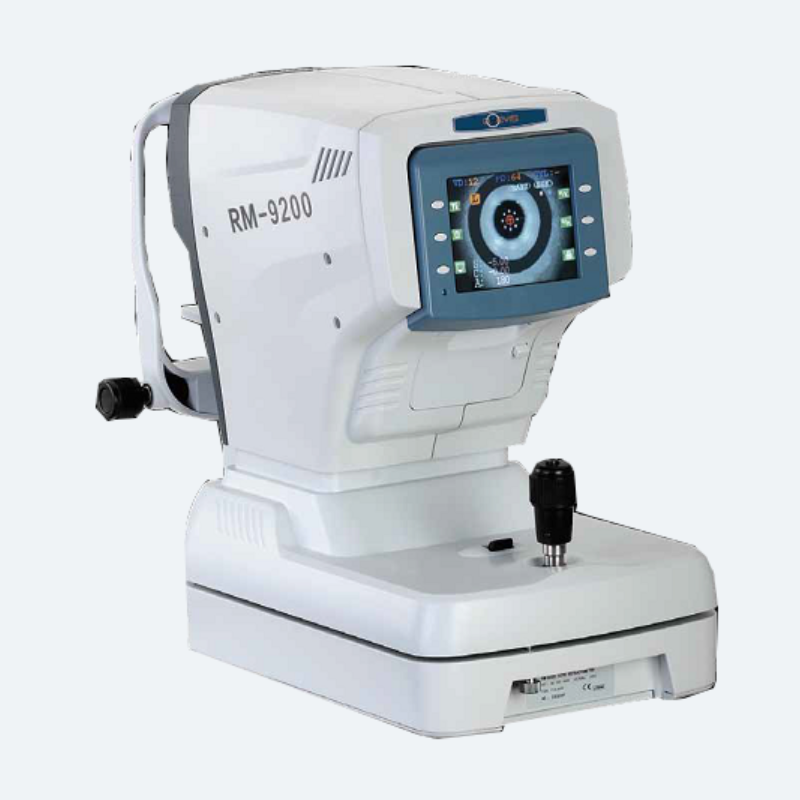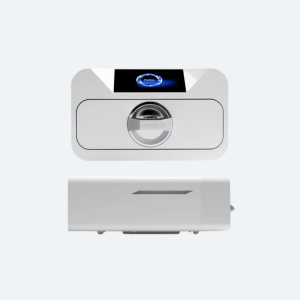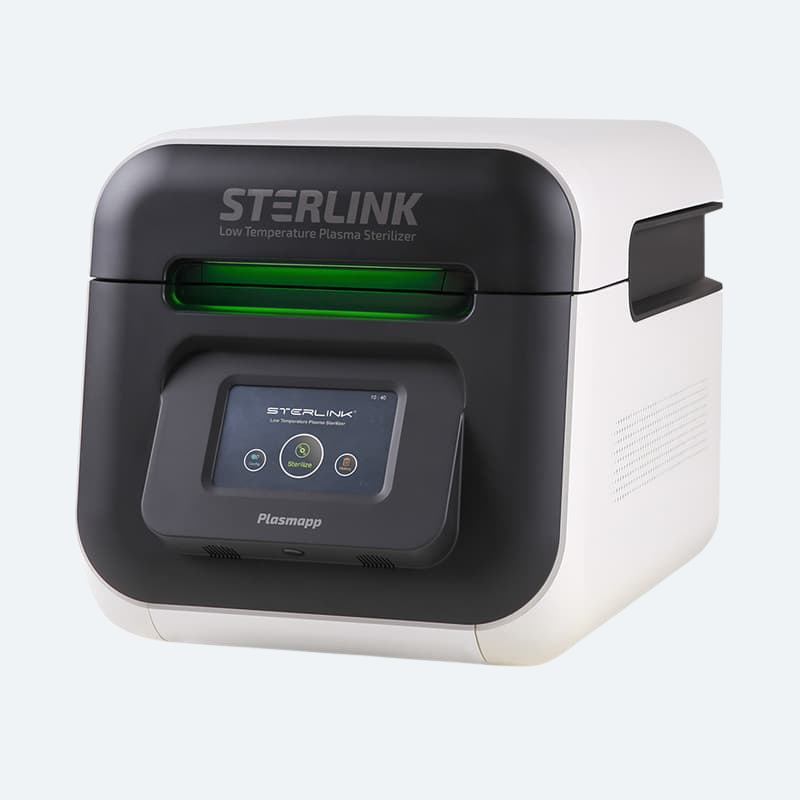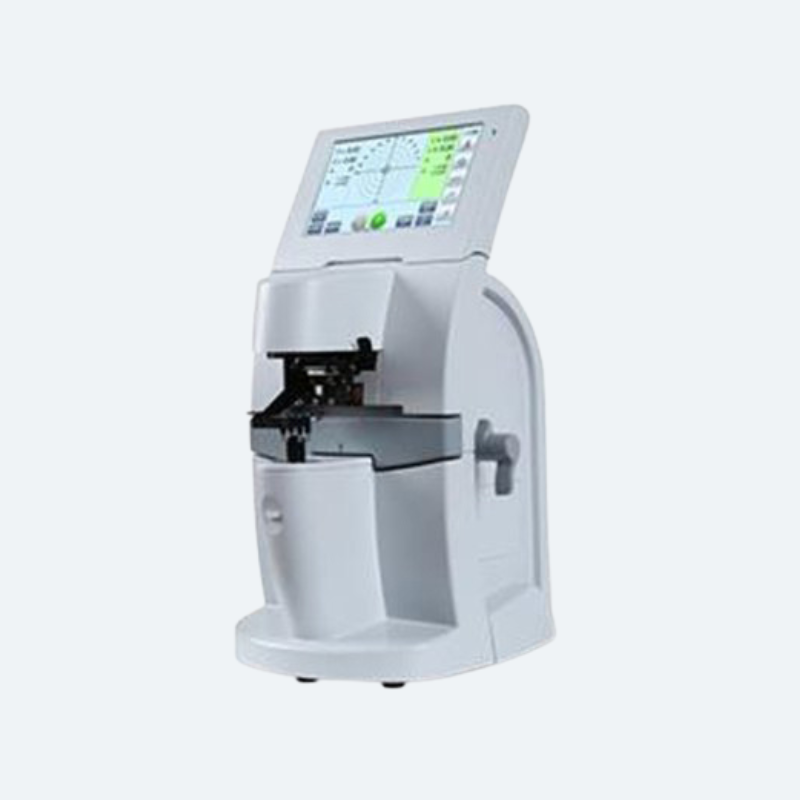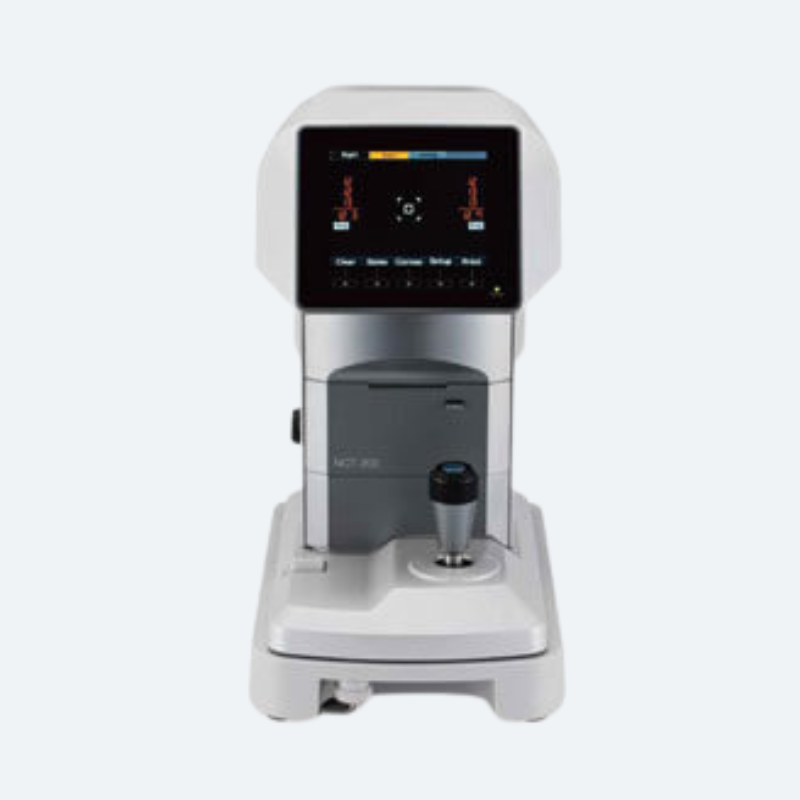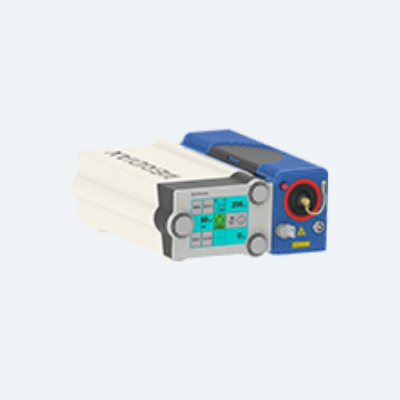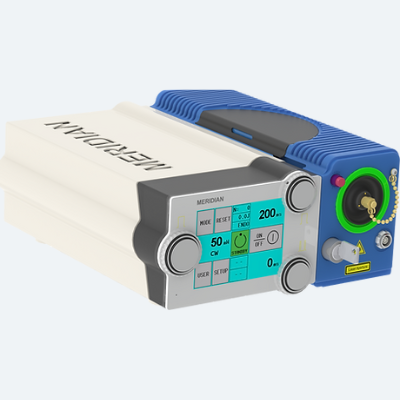Specular Microscope / Microscopy for Diagnose Corneal Disease
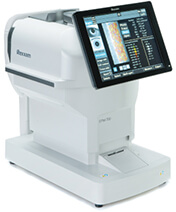
Specular Microscopy | Rexxam SPM 700
How is Specular Microscopy Used to Diagnose Corneal Disease?
Specular Microscopes - Principles
A specular microscope is an instrument used to examine the endothelium of the cornea, which is the layer of the cornea in contact with the aqueous humour transfer. The specular microscope permits visualization and photography of the endothelium.
The specular microscope is an optical reflection microscope that focuses a slit of light onto the corneal endothelial surface. Light beams that are reflected in a mirror-like fashion are subsequently concentrated onto a film surface for real-time visualization on a monitor.
Due to its design, the specular microscope only allows observation of light that is specularly reflected, blocking non-specular light rays. The light reflected from the endothelial surface is collected by the same lens and directed to a film or video monitor for analysis.
What is Specular Microscopy?
Specular microscopy is an optical test used to examine the cornea, specifically focusing on the endothelial tissue, which is the innermost layer of the cornea. This test evaluates the number, shape, and size of endothelial cells by capturing high-resolution images, allowing for a detailed morphometric analysis and detection of any potential lesions in this structure.
In a young, healthy individual, the endothelial layer typically displays a uniform pattern of hexagonal cells. However, this pattern may change with age, due to disease or surgical interventions, leading to cell loss. In severe cases of cell loss, vision can be impaired.
What is the Use of Specular Microscopy?
Specular microscopy is utilized for diagnosing and tracking corneal disorders, assessing the effects of wearing contact lenses, determining the appropriateness for refractive surgery, and verifying the condition of donor corneas for transplantation.. In essence, the connection between corneal anatomy and specular microscopy is crucial and beneficial.
Specular microscopy is primarily used for the routine preoperative evaluation of patients undergoing cataract surgery or phakic lens implantation. It is also utilized for diagnosing and monitoring corneal degeneration and dystrophies.
How Test is Done?
The test is conducted using a non-contact specular microscope, which assesses the cells in the innermost layer of the cornea, evaluating their density, size, and shape. The Rexxam SPM 700 microscope is used for this procedure, and in addition to analyzing the endothelial layer, it measures corneal thickness as a pachymeter.
This technique involves projecting a beam of light at a specific angle onto the cornea. The light reflects off the corneal endothelium and is captured by the instrument, which magnifies the illuminated area and analyzes the cellular pattern to determine cell density in the captured area. Once the data is collected, the ophthalmologist interprets the results and shares them during the next visit.
This modern specular microscope analyzes the shape, size, and population of corneal endothelial cells, providing fast and accurate results. It offers full-auto, semi-auto, and manual operation modes for convenient usage. Lab Medica Systems is a importer, wholesaler, and supplier of the Rexxam SPM 700 Specular Microscope in India.
Specular Microscopy - Rexxam SPM 700
Simple to use specular microscope with fast and accurate analysis: Easy, Fast, and Accurate.
A specular microscopy is a vital tool for examining the corneal endothelium, a layer of hexagonally shaped cells crucial for maintaining corneal clarity. This instrument is indispensable for assessing endothelial cell density (ECD), a key indicator of corneal health. In patients with Fuchs Endothelial Dystrophy, a common corneal endothelial dystrophy, the specular microscope helps monitor changes in ECD, which often decreases, leading to corneal edema.
The microscope provides detailed images of the hexagonal cells, allowing clinicians to evaluate their size and shape. This is particularly important in detecting abnormalities in cell morphology. The coefficient of variation (CV) is a critical parameter measured by the specular microscope, indicating the variability in cell size. A high CV suggests increased cell size variability, often seen in corneal endothelial diseases.
During cataract surgery, fluctuations in intraocular pressure can cause endothelial cell loss. Preoperative and postoperative assessments using a specular microscope are essential to monitor the impact on endothelial cells. For patients with Fuchs Endothelial Dystrophy, this monitoring is crucial to prevent further endothelial cell loss and manage corneal health effectively.
The specular microscope is indispensable for diagnosing and managing corneal endothelial dystrophies, ensuring the preservation of vision and improving patient outcomes through detailed endothelial cell analysis.
Specular Microscope Overview
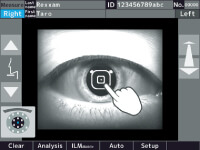
Continous Capturing of 16 Images
Unique zoom and auto alignment functions allow 16 images to be captured in just 2 seconds by simply touching the paracenter area.
You can choose from full-auto, semi-auto, and manual operation modes.
Speedy Analysis Function
After measurements, the best image is automatically selected from 16 images, completing the analysis in just 1 second.
Alternatively, you can manually select the best image from the 16 available.
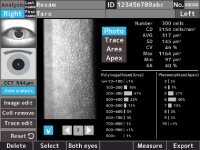
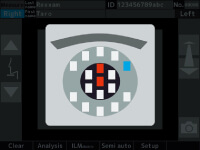
Multiple Measurement Points
A total of 17 measurement points can be assessed within a range of 0.25mm by 0.55mm, including the center, 6 points in the paracenter, and 10 points in the periphery.
Corneal Thickness Measurement
This device allows simultaneous capture of endothelial cells and measurement of corneal thickness.
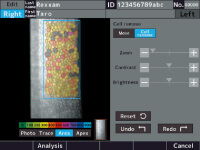
Edit Function
This function lets you adjust the contrast, brightness, and analysis results of the endothelial cell image. Additionally, you can remove cells, add or delete lines, and divide or merge cells.
Two Manual Analysis Methods
You can choose between two manual analysis methods: the center method and the frame method.
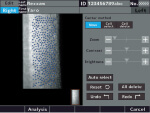
center method
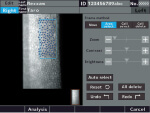
frame method
Display Mode Has 4 Types
You have the option to select from four visualization modes: ① endothelial cell image, ② trace view, ③ area view, and ④ pleomorphism view.
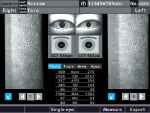
image of endothelial cell
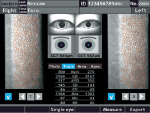
Tracedisplay
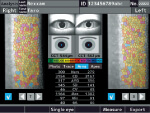
Area display
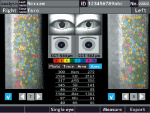
Pleomorphism display
Wide Screen
10.4-inch wide color display.
The swivel/tilt function makes it easy for the operator to support the patient during the procedure.
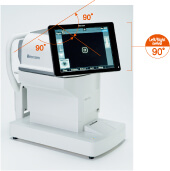
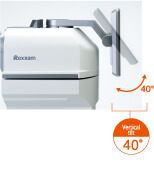
Electric Chinrest
Aligning the patient’s eye position with the eye mark is a straightforward process.
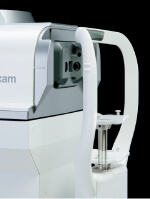
Specular Microscopy - Rexxam SPM 700 Specification
| Capturing of corneal endothelial cell | Capturing position | Capturing range | 0.25mm×0.55mm(W×H) |
| Center | 1 point | ||
| Paracenter | 6 points(2,4,6,8,10 and 12 o’clock directions) | ||
| Periphery(optic angle:27 degrees) | 10 points(1,2,4,5,6,7,8,10,11 and 12 o’clock directions) | ||
| Measurement of corneal thickness | Range of corneal thickness measurement | 400 to 750μm(step:1μm) | |
| Analysis parameter | [Number] [cells] | Number of endothelial cells | |
| [CD] [cells/m㎡] | Density of endothelial cells | ||
| [AVG] [μ㎡] | Average endothelial cell area | ||
| [SD] [μ㎡] | Standard deviation of cell area | ||
| [CV] [%] | Coefficient of variation of cell area | ||
| [Max] [μ㎡] | Max.cell area | ||
| [Min] [μ㎡] | Min.cell area | ||
| [6A] [%] | Rate of cell hexagonality | ||
| Histogram | Polymegathism | ||
| Pleomorphism | |||
| Monitor | 10.4 inch touch panel colored LCD(XGA) | ||
| Printer | Thermal line printer (paper width 58mm) | ||
| External interface | Ethernet(10/100Mbps)×1、USB-A×2、USB-B×1 | ||
| Source voltage/frequency | AC100V – 240V、50/60Hz | ||
| Power consumption | 90VA | ||
| Power saving function | OFF,3,5,10min. (switchable) | ||
| Size | H(503mm)×W(271mm)×D(459mm) | ||
| Weight | 19kg | ||
| Standard Accessories | Operation manual, Power cord, Printer paper, Fuse, Dust cover, Chinrest paper, Chinrest paper pin | ||
Authorization Letter

